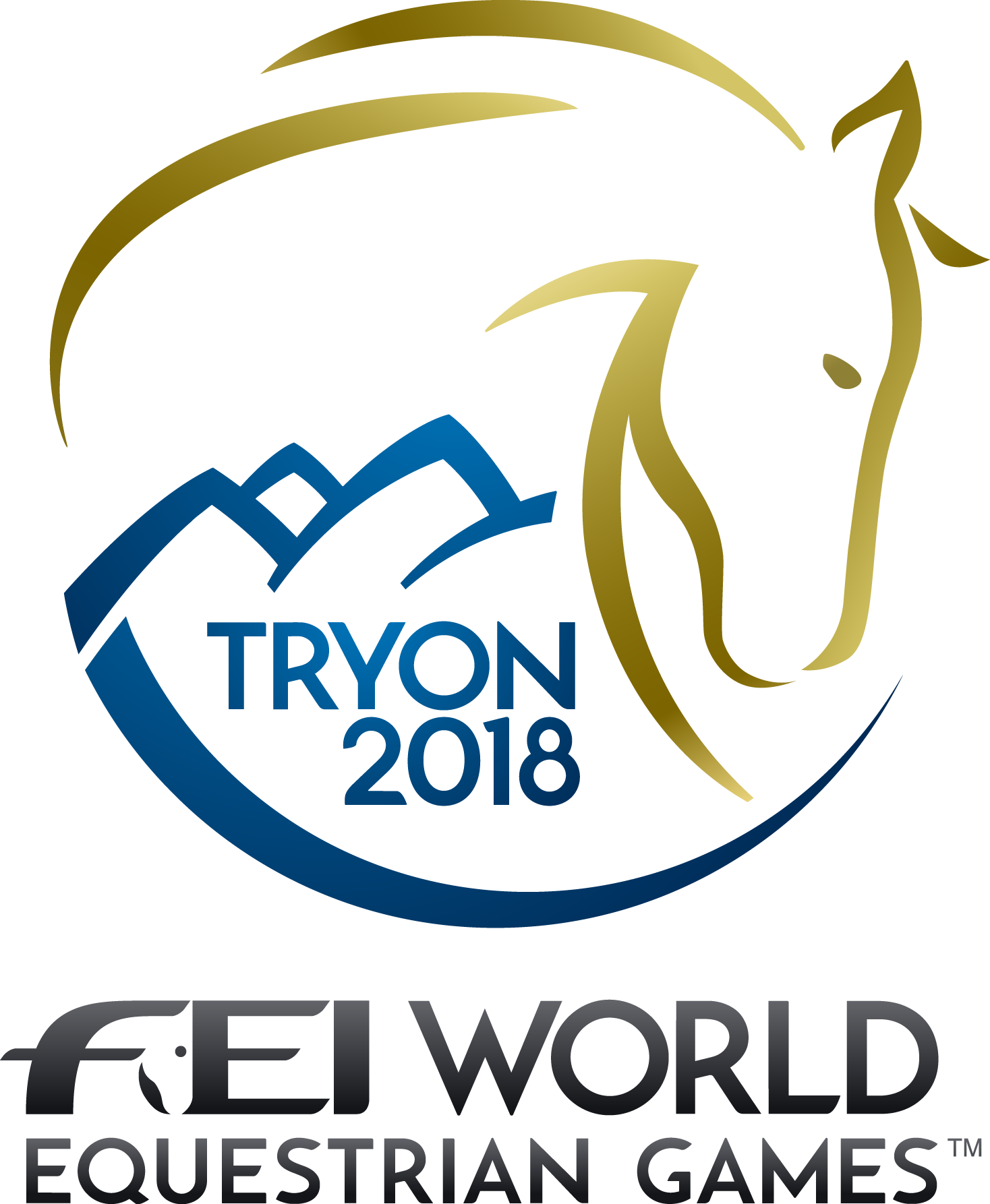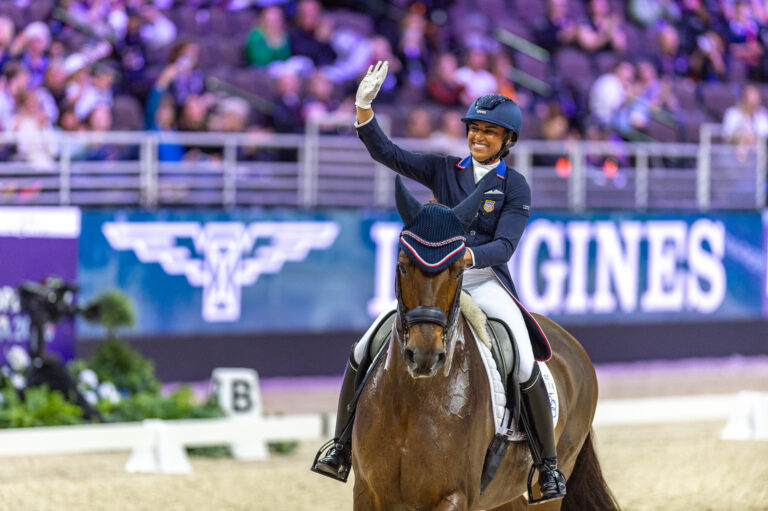
Some of you might remember driving to Kentucky and sitting in the grandstand for the 2010 Alltech FEI World Equestrian Games (WEG). Those of you who did may have had the privilege of being practically within touching distance while the incredible Totilas swept the dressage gold medals and you cheered on the USA’s Steffen Peters as he and Ravel brought home two bronze medals.
If you didn’t have a chance to make it to the Kentucky Horse Park in 2010, you’ll have another opportunity to see the world’s best dressage riders and horses in person at the Tryon International Equestrian Center (TIEC) in Mill Spring, North Carolina, Sept. 11–23. The 2018 WEG, only the second edition of the games to be held outside Europe since its inception in 1990, will be showcasing such favorites as Germany’s Isabell Werth and the Netherlands’ Edward Gal as well as a new generation of stars.

(Courtesy, TIEC)
In addition to Grand Prix dressage, this compilation of world championships in eight disciplines presents Para-Dressage, show jumping, eventing, reining, endurance, four-in-hand combined driving and vaulting. Part of the WEG concept is the chance for a peek at some of the other horse sports you may not have seen elsewhere because of your focus on dressage.
Back in the U.S.

WEG is a once-every-four-years opportunity to mingle with other fans, shop what promises to be an awesome assortment of vendors and always be able to say “I was there” when the global titles were decided. The WEG will be the participating nations’ initial chance to qualify for the 2020 Tokyo Olympics, and preparations are ramping up for the moment when the first horse heads down centerline in the shadow of the Blue Ridge mountains.
“I, for one, can’t wait,” said U.S. dressage chef d’equipe and technical advisor Robert Dover, who will have plenty of talent from which to choose his team. Opportunities will abound for all WEG competitors to find their place in the discipline’s history book. Valegro, Britain’s marvelous gold medalist from the 2012 and 2016 Olympics and 2014 WEG is retired, along with Ravel and so many other big names you’d recognize from major competitions over the last five or six years.
“I think you’re probably going to see new faces, both equine and human, from every major country in the world. The cycle always changes after the last games,” stated Dover, an Olympian who is also a veteran of the WEG.
Looking ahead to the action at TIEC, Dover observed, “There’s going to be different riders and countries jockeying for those medal podiums.” In addition to the usual suspects—the Germans and the Dutch—the Danes and Swedes also are emerging stronger and the British, even without the now-retired Valegro, have many possibilities for putting together a medal-capable team. The U.S. should be right in the middle of the fray with an array of talent.
Who’s Who for U.S. Dressage?
The only horse-and-rider combination from the 2014 WEG on the U.S. side that is a likely team starter for 2018 is Verdades and Laura Graves, who came to the world’s attention at those games in Normandy, France, where they were part of the fourth-place squad. That combination made a spectacular international championship debut at that WEG, finishing fifth individually as the best American entry, ahead of such equine stars as Great Britain’s Carl Hester and Nip Tuck.
Peters, ninth in the 2014 WEG on Legolas, is also a member of the USEF’s elite program, revealed on a list that came out at the end of 2017. However, he is named with Rosamunde, having passed Legolas along to his assistant, Dawn White-O’Connor, who was competing the horse before his planned retirement in April. Peters’ string now also includes Suppenkasper, a Dutch-bred previously ridden by Helen Langehanenberg of Germany. Having appeared in only two FEI competitions with Peters through mid-January, the new mount’s name is on the 2017 pre-elite list rather than the elite list. Peters and Suppenkasper are likely to move up, however, after they have a chance to show in more FEI classes during the winter series.
Adrienne Lyle, who rode in the 2012 Olympics and 2014 WEG on Wizard, is part of the elite program with the ever-improving Salvino. Others on that roster who are possible WEG candidates include Charlotte Jorst with Kastel’s Nintendo, Olivia LaGoy-Weltz and Lonoir and Kasey Perry-Glass with Goerklintgaards Dublet, who, like Graves and Peters with Legolas, was a member of the U.S. Olympic bronze-medal squad during the 2016 Summer Games in Rio.
While the U.S. stars were out of the competition arena during the fall and early winter, the Europeans have been showing heavily on their home turf. When the Europeans concentrate on their indoor shows, which contributes to their Eurocentric view of what’s happening, “The Americans just seem to go out of the minds of everybody within our sport,” said Dover. What he has seen in the training sessions with the U.S. riders has encouraged him. “I can tell you we’re going to be very strong,” Dover believes.
More than the medals themselves are at stake in Tryon. If the U.S. doesn’t qualify for the Tokyo Olympics at TIEC, the team must wait nervously until the 2019 Pan American Games in Lima, Peru.
Ready to Host the World
Steering the 2018 WEG is Mark Bellissimo, who also is the main man for the Winter Equestrian Festival and Adequan Global Dressage Festival, both in Wellington, Florida, as well as the Colorado Horse Park in Parker, Colorado. He has taken on a real challenge. Things haven’t always run smoothly for WEGs in the past, with financial woes being an almost constant theme. In fact, TIEC got the nod only after Canada’s Bromont facility, originally designated as the host for the 2018 WEG, ran into fiscal problems and bowed out in 2016. That didn’t give TIEC much time to get ready, which complicates the already difficult WEG scenario, but it’s a help that the organization holds shows on a regular basis. Even so, under the best of circumstances, WEG can present pitfalls for those ambitious enough to take it on.
“It’s a tough event because, typically, those who have done the WEG, with the exception of Aachen [2006], are bringing together an organizing committee that’s essentially operating a one-time event. Invariably, you’ll see turnover in that staff. There’s a lot of getting to know people,” Bellissimo pointed out. “What’s unique about this experience is that I’m bringing a seasoned management team that knows how to work together; people who understand that this venue is going to endure beyond this event,” he emphasized.
At stake, Bellissimo observed, are “my reputation, our partners’ reputation, our organization’s reputation. If it doesn’t go well, it sets up a very bad precedent for the future of this venue.
“There’s appropriate pressure for us to do a great job and make sure this impression is a good one and that people come back and want to do more championships here,” Bellissimo continued. “I would love for the U.S. [national] championships to be all together in a similar format,” he suggested.
TIEC has 1,600 acres and can host all the competitions in one location, which harks back to the concept of the first WEG in Stockholm. Kentucky and Aachen were the only other venues where all the sports were contested on the same property. Normandy had problems with traffic and transport because eventing and endurance were miles away, while other disciplines were scattered around the city.
“[At TIEC], it’s all condensed in one venue,” commented Thomas Baur, who is in charge of the dressage at the WEG. “You can watch dressage in the morning and something else in the afternoon. It is a big advantage.”
Grand Prix dressage and Grand Prix show jumping at TIEC will be staged in a ring being converted from the grass field where hunter derbies were held during the Tryon series show year. All-weather footing will be put down and grandstands that will meet spectator demand by seating 20,000 are going to be erected. Para-Dressage will be held next door in the George Morris Arena, the all-weather ring that is the main venue for jumpers and dressage during the show year.

There’s plenty to see at the WEG, but for those who want to take a break from spectating can eat at one of the restaurants that are a permanent part of TIEC. There’s a lot of variety, from an Italian spot to an upscale bar and grill, a diner and a deli that also offers a limited selection of groceries.
TIEC is located in a horsey area of the state. Nearby Tryon is well known for its hunt and equestrian activities. The ambience is semi-rural with small towns dotting the region. The showgrounds are about an hour east of Asheville, North Carolina, an eclectic town with great restaurants and shopping as well as the famous Biltmore Estate that offers lots of attractions. A little more than an hour to the east of TIEC is Charlotte, where the area’s major airport is located. (Asheville also has an airport. Another option is the Greenville-Spartanburg Airport in nearby South Carolina in case you don’t feel like getting behind the wheel to go to the WEG.)
At the end of last year, estimates were that there would be 90 Grand Prix dressage horses competing along with the same number for Para-Dressage. Although a few U.S. riders have competed at Tryon, they won’t have an edge over the Europeans or participants from elsewhere in the world because no WEG candidates will have ridden in a dressage competition in the new main arena before the games.
Mark Your Calendar
Dressage gets under way with the first day of the Grand Prix at 8:45 a.m. Sept. 12, the morning after the opening ceremonies. The team medal will be awarded Sept. 13 at the close of competition after 6 p.m. The Special, which carries an individual medal, runs from 10:30 a.m. to 5:30 p.m. Sept.14. Sept.15 is a rest day for dressage, so it’s a good time to take in the eventing cross-country and that evening, the reining.
The freestyle will be presented from 8:30–11:40 a.m. Sept.16. According to Michael Stone, president of Equestrian Sport Productions, which is staging the WEG, the unusual time frame for the freestyle—which many expect to see under the lights—is because of European television. Western Europe is six hours ahead of the eastern U.S.
Para-Dressage runs Sept.18–22, with medals awarded every day, except Sept. 20. While the medal competition is held during the day in all the sports but reining and vaulting, which go into the evenings, there also will be exhibitions after the championships are completed each day. On the schedule are show jumping speed classes and gladiator polo, a version of the sport played with less riders in a smaller space than the regulation game. At press time, organizers were working on other programs to be announced.
If you can’t make it to WEG, no worries; you can watch from home. “We’re going to have about 60 hours of live programming, which is unprecedented in this country,” Bellissimo revealed. Coverage will be split among the NBC network, its sports channel and other outlets. The event’s digital presence will be appropriately huge.
For more information about the WEG, including tickets and lodging, visit tryon2018.com.
Click here for complete dressage coverage, event highlights, and a behind-the-scenes experience during #Tryon2018. Coverage of the FEI World Equestrian Games™ Tryon 2018 is brought to you by Vita Flex.











